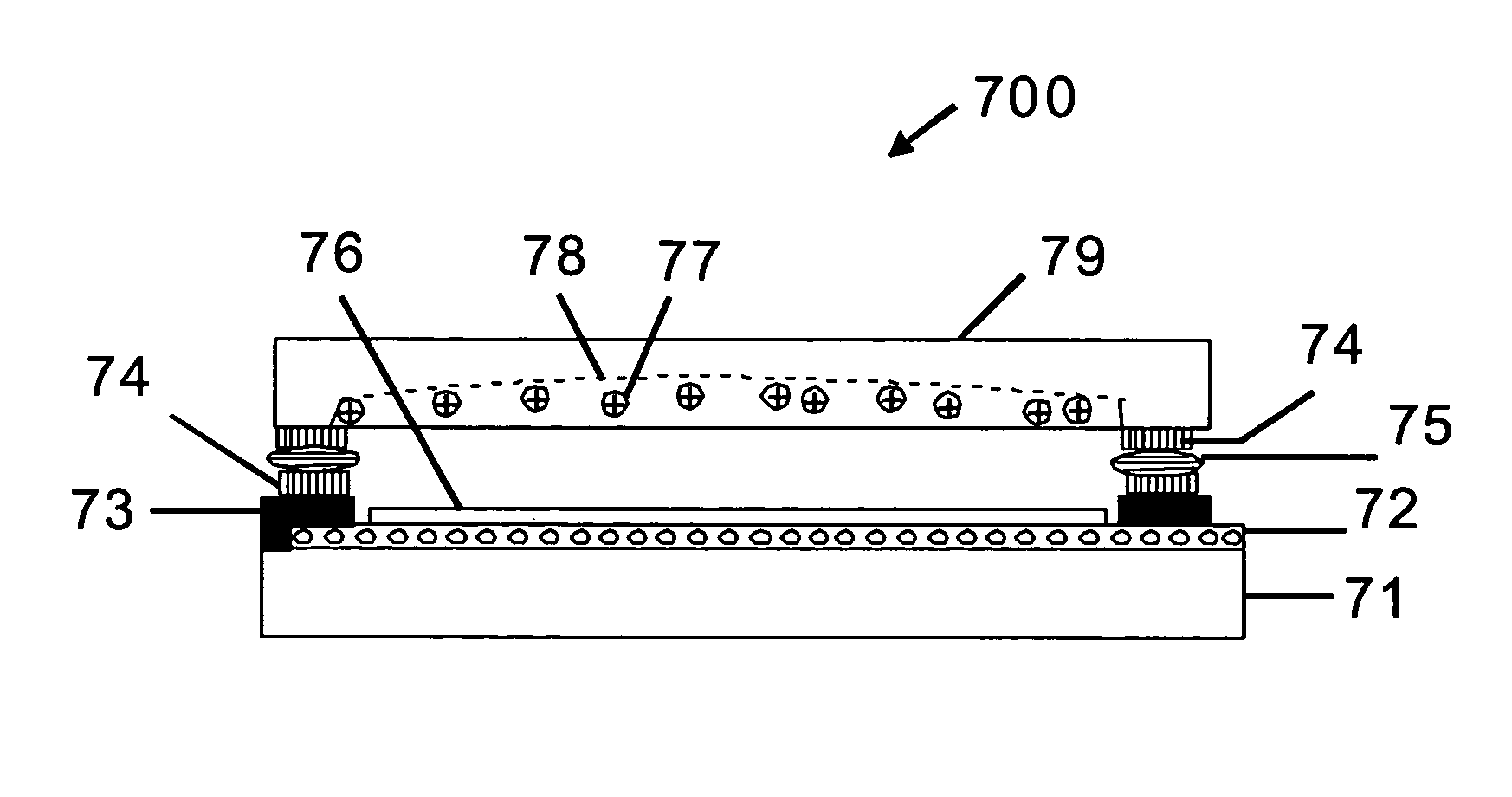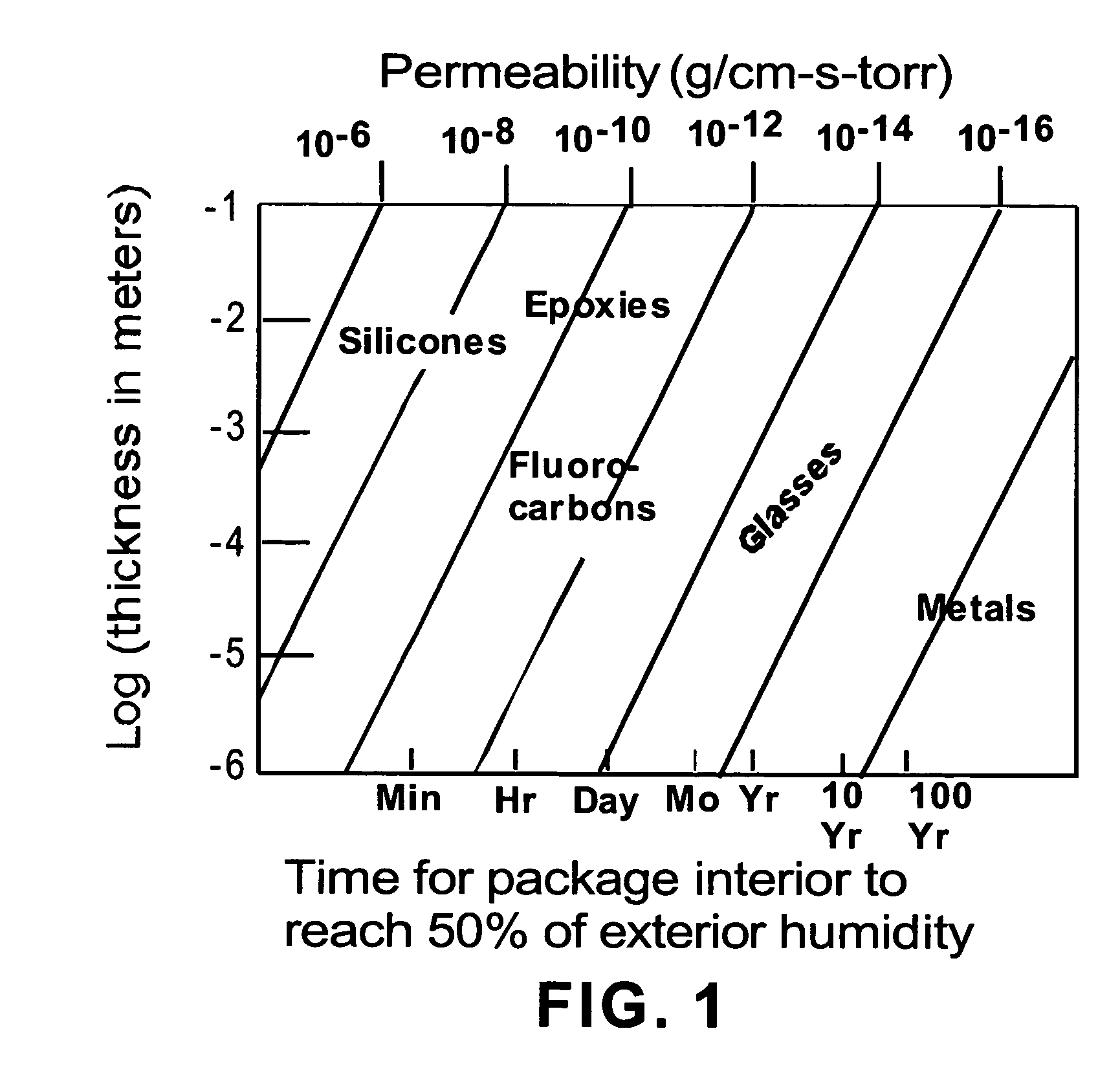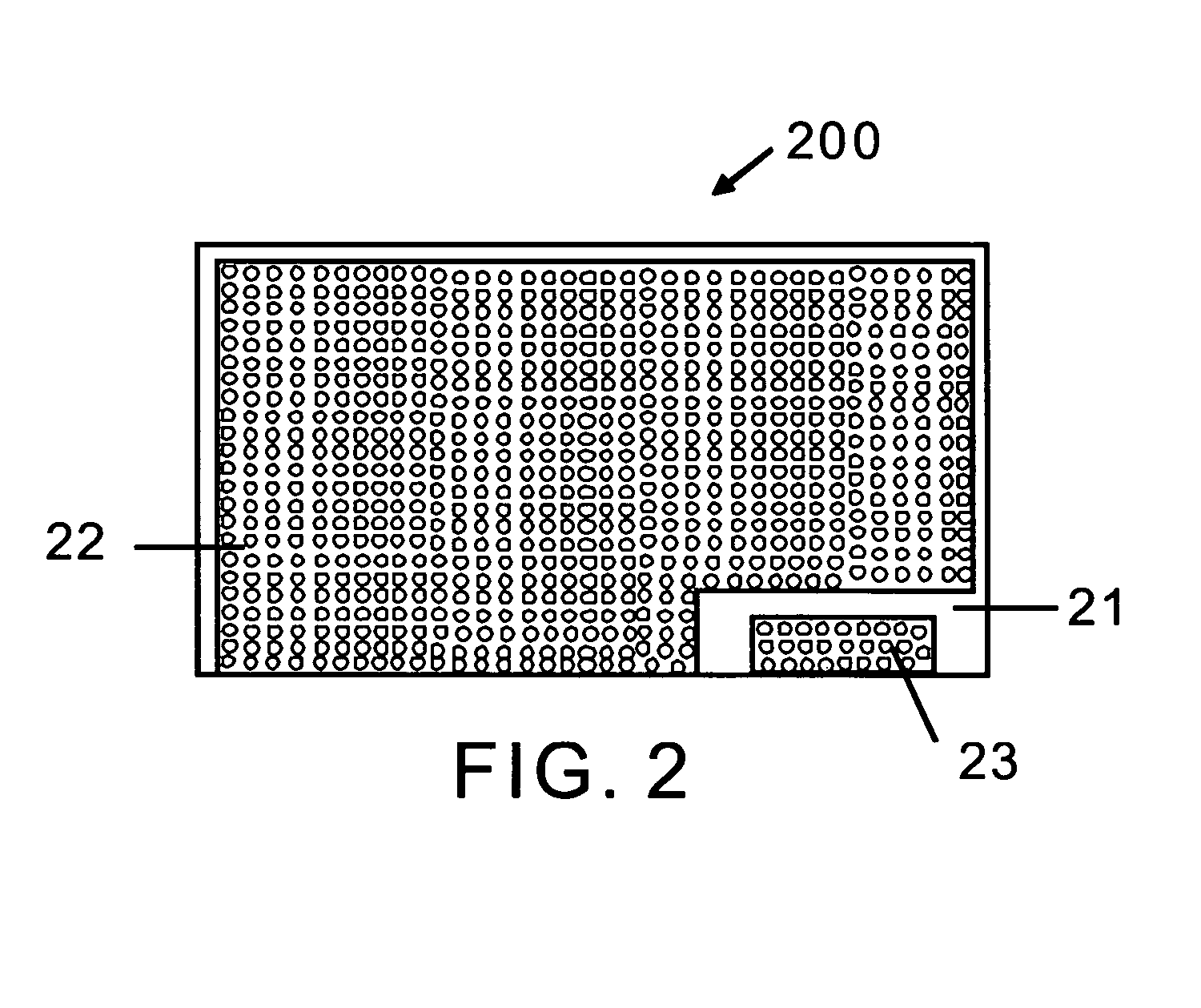Metal seal packaging for organic light emitting diode device
a technology of organic light-emitting diodes and seal packaging, which is applied in the direction of discharge tubes/lamp details, discharge tubes luminescnet screens, electric discharge lamps, etc., can solve the problems of oled's longevity, device useless as a display, and deterioration of oled performance, so as to enhance the life performance and suppress the permeation of moistur
- Summary
- Abstract
- Description
- Claims
- Application Information
AI Technical Summary
Benefits of technology
Problems solved by technology
Method used
Image
Examples
Embodiment Construction
[0045]FIG. 1 is a graphic illustration of moisture permeation through different materials of seal with different thickness plotted on Y-Axis and the time for the interior of the device to reach 50% of the exterior humidity plotted at the bottom of X-Axis. At the top of X-Axis is plotted the permeability in gms / cm, sec, torr for various materials. FIG. 1 depicts the thickness of the sealant, through which moisture permeates, starting from 1 micron on Y-Axis. For a thickness of 1 micron, it is evident from FIG. 1 that for metal seal, it takes years for the interior of the device to reach 50% of exterior humidity. Under these conditions, epoxy seals take only days to reach 50% of exterior humidity. Although the devices like OLED will be terminating its life performance by the time the interior humidity reaches 50%, the graph illustrates that the metal seals are the best against moisture permeation.
[0046]FIG. 2 is the bottom substrate 200 containing the transparent anode 22 of OLED and ...
PUM
 Login to View More
Login to View More Abstract
Description
Claims
Application Information
 Login to View More
Login to View More - R&D
- Intellectual Property
- Life Sciences
- Materials
- Tech Scout
- Unparalleled Data Quality
- Higher Quality Content
- 60% Fewer Hallucinations
Browse by: Latest US Patents, China's latest patents, Technical Efficacy Thesaurus, Application Domain, Technology Topic, Popular Technical Reports.
© 2025 PatSnap. All rights reserved.Legal|Privacy policy|Modern Slavery Act Transparency Statement|Sitemap|About US| Contact US: help@patsnap.com



